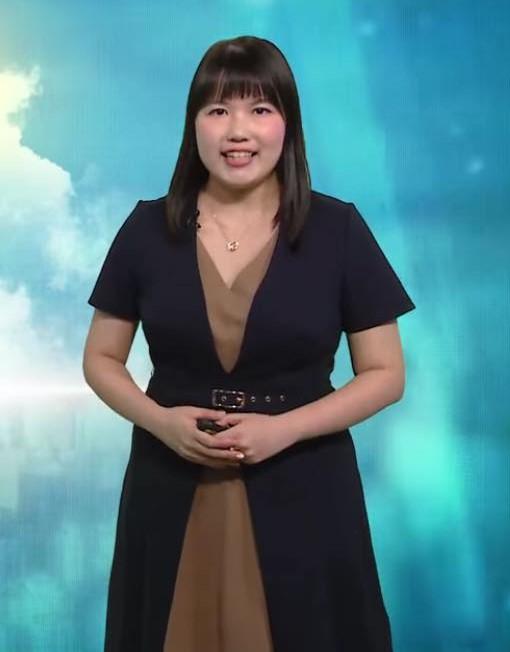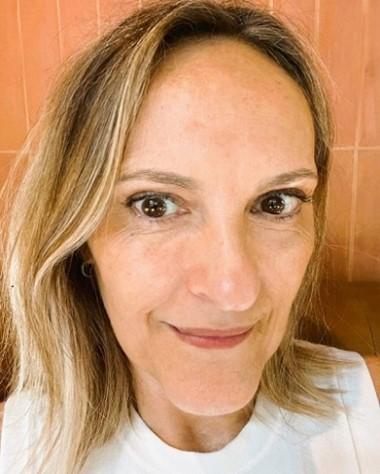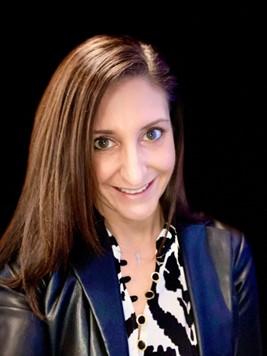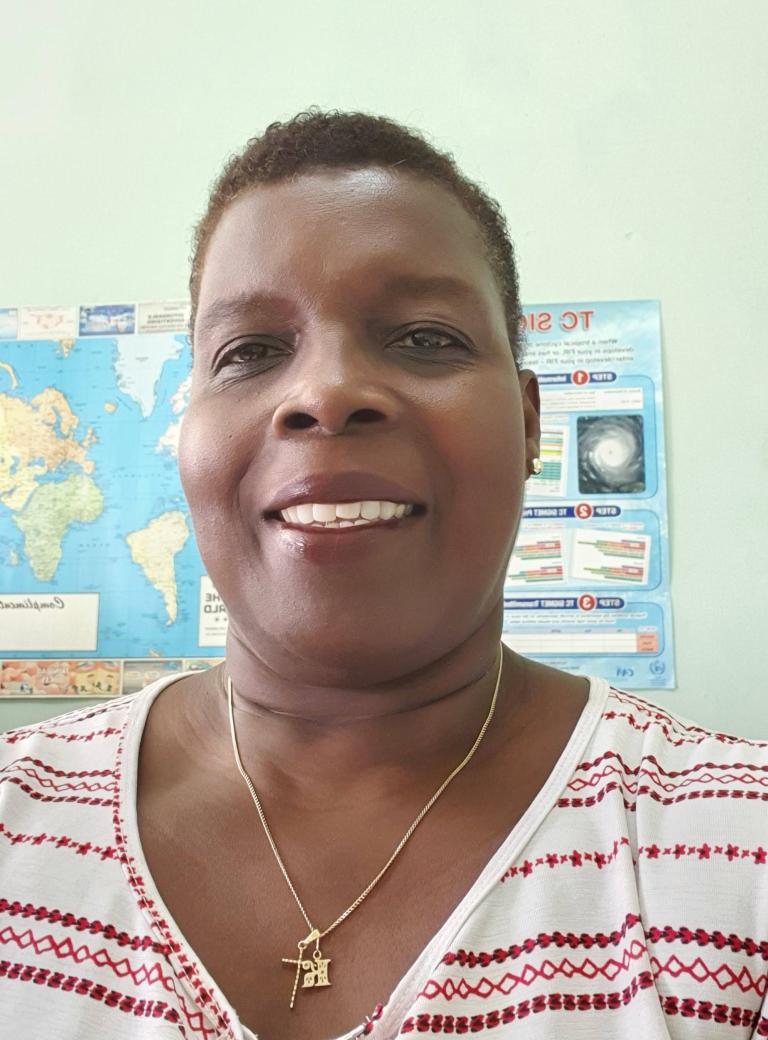Aviation - Women in Leadership

The following articles provide inspiring stories by female leaders within WMO's Standing Committee on Services for Aviation (SC-AVI). WMO is committed to promoting gender mainstreaming and to empowering more women to hold leadership roles in aeronautical meteorology.
Jump to: Africa | Asia | South America | North America, Central America and Caribbean | South-West Pacific
Read these articles in: French (Français) | Russian (Pусский) | Spanish (Español) | Arabic (عربى) | Chinese (中文)
WMO Regional Association I (Africa)

Gaborekwe Khambule, South African Weather Service, South Africa (April 2024)
When I was growing up, I used to wonder how my father was able to accurately predict the weather by simply observing the wind and cloud formations, yet he had not been to school. It was only when I studied geography at school that I got to learn about the basic science behind the weather. My geography teacher once asked: “imagine you were a meteorologist sailing from Marion to Gough Island, if you ignored the currents how long will it take you?” I grew up in a rural area of South Africa and, without any exposure to career guidance, there was no way I was going to answer this question.
Nevertheless, I was curious to know who “Meteorologists” were and what to study to become one. My geography teacher told me that I needed to study meteorology, however, it was reserved for white South Africans only. In 1983, the Department of Transport made a call for first learners to enrol for a Diploma in Meteorology. I was one of the seven learners (two females and five males) who took up this opportunity and that’s when my career took off. In 1987, I obtained my National Diploma in Meteorology, which qualified me as the first black female meteorologist in the country. I studied further and obtained my National Higher Diploma in Meteorology in 1989.
I then progressed to work for the Weather Bureau in 1994 under the new dispensation. At that moment, my career started to take shape, and I was responsible for generating public, marine and aviation weather forecasts. My growth began when the Weather Bureau was converted into a State-owned agency in 2001. I was promoted to assistant Director in a supervisory capacity, based at the Central Forecasting office for marine, public, and aviation forecasting. My supervisory role and management activities prompted me to hone my skills in leadership and I worked on the pilot project for WMO Aircraft Meteorological Data Relay (AMDAR).
My international career took off after I was sent to Kenya to attend a EUMETSAT Satellite Train a Trainer course in 1998. I attended the WMO Commission for Aeronautical Meteorology (CAeM) in 2008 and was earmarked for Rapporteur for RA I (Africa). During this period, I was also involved in ICAO as chair of the AFI MET subgroup and, later, the SADISOPSG.
I got involved in the WMO expert teams, including as a member of the CAeM Expert Team on Education and Training and a co-chair of Communication, Collaboration and Stakeholder.I contributed to the aviation global agenda as an expert and as a co-chair. From 2020 I served as a member of the WMO Standing Committee on Services for Aviation, as co-chair of of the Expert Team on Education, Training and Competency, and then became a co-vice-chair of SC-AVI for period ending in March 2024.
As my career evolved, I became involved in strategic decision-making processes within my organization and this encouraged me to acquire managerial skills and knowledge, including attaining a Management Diploma and a Master’s in Business Administration(MBA).
I represented the SAWS at national, regional and global levels, presenting papers on aviation-related matters including the ICAO Assembly in Montreal, presenting the Regional Implementation Plan on AMDAR development as a resource for WMO within the African Region, organized the presentation for APIRG on WAFS future developments and enhancements that was presented by the UK Met Office.
I have led a team of successful colleagues, and have recommended their participation in the WMO expert teams and other groups, focal points, and the ICAO Meteorology Panel to ensure succession.
Nationally, I served as a Board member of SANSA for two terms and am currently serving as a member of the Committee of Data (CODATA) for Science and Technology. My contribution to aeronautical meteorology has received recognition nationally, regionally, and internationally. I was awarded Aviation Professional of the Year 2019 through South African Civil Aviation Industry awards and have received the award for Women in Business and Government.
WMO Regional Association II (Asia)

Christy Leung Yan-Yu, Hong Kong Observatory, Hong Kong, China (May 2024)
Born in a densely populated Hong Kong city built with tall skyscrapers, I was always fascinated by the seemingly unreachable high sky. Hong Kong is situated along the coast of Southern China, which was affected by tropical cyclones and rainstorms every summer, where I was amazed by the work of meteorologists that provide early warnings to safeguard citizens’ life. This passion for the atmosphere and science led me to pursue my goal to be a meteorologist. After graduating with a degree in physics from the University of Hong Kong, I pursued a master’s degree in meteorology at the University of Reading in the United Kingdom. I first worked at the operational forecast office in Singapore and then joined the Hong Kong Observatory. During the years abroad, I got precious operational and research opportunities to sharpen my weather forecasting and applied research skills.
In the past few years, I had the fortune to work together with aviation experts in the Asia Pacific Region to help improve the regional SIGMET service. I contributed to the work as a coordinator of various SIGMET coordination groups, and this has further groomed my leadership potential. There were also opportunities for me to represent Hong Kong in Asia-Pacific regional meetings of the International Civil Aviation Organization (ICAO), thanks to the trust and guidance given by my seniors to me. I have also moderated sessions, led and participated in different ad hoc groups and presented in meetings. These have fostered closer collaboration between countries and helped improve the overall regional SIGMET service.
During the COVID-19 pandemic, there were restrictions for human connections, yet online conferences and collaboration between aviation experts never stopped. These experiences allowed me to make new friends with aviation professionals all around the globe. I realize that the sky might be divided by country borders, but meteorology doesn’t recognize boundaries. All humans, whether men or women, are all under the same sky.
I was honored to be appointed as the leader of the WMO Regional Association II (Asia) Working Group on Weather, Climate, Water and Related Environmental Services and Applications (WG-S) Expert Team on Services for Aviation (ET-AVI) since 2022. As a young female leader, I have organized regular online meetings to actively engage team members. With great assistance from the team members and the Secretariat from the WMO Regional Office for Asia and the South-West Pacific (RAP), the milestones of conducting a Quality Management Survey and an RA II Aeronautical Meteorology Webinar in 2024 were completed with great success!
I am grateful that I have the chance to discuss meteorology with great minds around the world. My seniors, who are open-minded and generous, allow me to be involved and to lead various projects that contribute to the international aviation community. I was blessed with many opportunities at the early stage of my meteorology career.
Though traditionally physical science was more male dominated, personally I have encountered many wonderful young ladies with brilliant minds as my working counterparts. Every person, no matter male or female, is a raw diamond. And, with humble learning and continuous growth, everyone can become leaders and shine brightly.
WMO Regional Association III (South America)

Claudia Ribero, Servicio Meteorológico Nacional, Argentina (June 2024)
When I was a child, I loved natural sciences and I used to read every book that was dedicated to them. As I grew up, I decided to pursue a career that would combine natural science with mathematics and physics. These were my favourite subjects. So I chose to study meteorology at Buenos Aires University (UBA).
After graduating and getting a job related to meteorology, I discovered that I was really interested in meteorology applied to aviation. I still remember how excited I felt when I completed the recruitment process and passed the exam to start working as an aeronautical meteorologist at an airport! I also had the great opportunity to support aviation activities as a forecaster at the Centro Meteorológico Marambio in Antarctica.
All these jobs made me realize how my day-to-day work supported the decision making process for aviation users, and how the meteorology conditions impact directly on the different aviation stakeholders. For this reason, I continued studying to improve my skills related to the user approach and planning issues dedicated to the public field. At that time, I graduated as a social scientist specialized in public policies and a great female mentor gave me the opportunity to start designing, planning, and implementing, with an amazing team of men and women, the first Aeronautical Meteorology Quality Management System in our service.
I started to collaborate as a MET QMS expert in the ICAO regional groups and other regional projects. After the restructuring of ICAO, I was invited to participate in the global ICAO Meteorology Panel (METP) as an expert member nominated by Argentina. I also participated as a core member in the WMO Expert Team of the former Commission for Aeronautical Meteorology (CAeM).
Following the WMO governance reform in 2020, I became the Gender Mainstreaming Thematic Coordinator of the Standing Committee on Services for Aviation (SC-AVI). Recently, I was selected as a SC-AVI gender focal point, as well as a member of the Task Team on the Long-term Plan for Aeronautical Meteorology (TT-LTP). In addition, I still work for the Servicio Meteorológico Nacional (SMN) in Buenos Aires, Argentina as part of the Aeronautical Meteorology Directorate of SMN. Moreover, as part of my management activities, I have developed a FOG climatology study to facilitate the FOG forecasting at airports, and in recent years have focused and worked on studies of meteorological hazards and their impact on daily airport operations for the last years.
I continue to participate and collaborate in different MET groups, putting focus on the importance of gender issues and promoting equal opportunities in our field.
I am deeply grateful to all my mentors at national, regional and international level. Especially to the people and the organizations who gave me the opportunities to learn and grow in meteorology for the aviation domain, and the amazing colleagues with whom I shared so many challenging moments and work schedules, even during the Coronavirus pandemic! What can I say about the efforts of those who led the MET groups, they inspired the MET community. They were able to see what the future would hold for us and help continue the work for the aeronautical meteorology community during these hard times. I take this opportunity to share a summary of my job experiences till now, because I am convinced it is important to share the experiences with the young graduates or almost graduated. Even if change is the only "constant" in our lives, it is so important to know the stories and the history.
My advice to other women starting out on their career is to follow their essence, but always be open to new ideas. And never stop learning and working collaboratively.
WMO Regional Association IV (North America, Central America and the Caribbean)

Jennifer Stroozas, National Oceanic and Atmospheric Administration (NOAA), USA (April 2024)
When I was around 5 years old, I still remember the day a tornado went through 10 miles from my house. I was terrified, fascinated, and a little excited about what was going on. From that moment on, I was usually paying attention to the weather in some way. Once in middle school, I had an unforgettable Earth Science teacher who led a unit on meteorology which included drawing basic weather analysis maps. I was officially hooked on weather. Still paying attention to thunderstorms, I thought it would be interesting to work for the US National Weather Service where all of the thunderstorm and tornado warnings came from. Fast forward to high school. The time came to decide what university to attend and what to study, so I chose a school where I could study weather, the University of Wisconsin - Madison.
After getting my degree in Atmosphere and Oceanic Science, I was able to fulfill my dream and began working for the US National Weather Service in 2001, beginning as an operational meteorologist in the field. I quickly discovered that what brought me the most fulfillment in operational meteorology was a connection to people and decisions that were being made. This first began in the specialty of fire weather, where wildfire management teams would not only make life and death decisions about wildland firefighters on the line, but also where to dedicate resources based on a forecast. Although challenging, it was satisfying to me to get instant feedback, knowing my forecast mattered. That love of decision support continued as I delved into the world of aviation weather. I transitioned to positions that worked more closely with partners and built on the customer service and science communication aspects. Aviation weather and fire weather both gave me opportunities to work closely with partners.
My career has also been a bit unconventional. In 2014, I stepped away from the workforce and meteorology entirely to take care of my small child. It was an extremely difficult decision to make, and it highlights the challenges of what it’s like to be a working parent in modern society. There have been many challenges related to gender throughout my career, challenges I know aren’t unique to only me, and I am thrilled to be a part of WMO who recognizes and supports gender mainstreaming in aviation weather. Once my child found the way into pre-school, I decided to take the leap back into meteorology, also not an easy road. I returned to the National Weather Service in 2017, back into aviation weather, and this time embedded with Federal Aviation Administration partners at an Air Route Traffic Control Center, providing aviation weather information to air traffic controllers and pilots to keep them safe while simultaneously contributing to the efficient flow of air traffic. I was thrilled to continue the path I had started earlier, back to science communication and partner interaction.
After three years in that position, I became a part of the National Weather Service Aviation Weather Center in 2021 as the Warning Coordination Meteorologist, leading outreach, education, customer service, and partner liaison work for aviation weather and hazards. In my role here, I have been able to expand my passion to international work, first as a part of the International Civil Aviation Organization as an Advisor, then to WMO. I never in my wildest dreams envisioned myself in the aviation weather community as I started my path into meteorology as a career, let alone now in international circles. I couldn’t be more excited to be a part of this global network.

Kathy-Ann Caesar, Caribbean Institute for Meteorology and Hydrology, British Caribbean Territories (June 2024)
I have always been guided in a strange way to pursue weather as a career. In high school, my best friend introduced me to clouds and I was hooked. A few years later, another good friend, knowing of my love for meteorology, brought me an Ad for a meteorological assistant at the Trinidad and Tobago Meteorological Service (TTMS). And so, the adventure began, from TTMS to my present position as the Chief Meteorologist at the Caribbean Institute for Meteorology and Hydrology (CIMH), it has been a journey into a fascinating career.
I began my dream job in meteorology as a Meteorological Assistant aka an Aeronautical Meteorological Observer at TTMS 1983. It was a fascinating environment to learn about the weather and I was encouraged to go further. And so, in 1988, I did, first pursuing my Bachelor’s degree at the State University of New York, Brockport, where I gained a B.Sc. in Meteorology with Mathematics in 1992; and thereafter my Master’s degree in Meteorology from Texas A&M University in 1995. Both institutions, fostered in me a passion for the science, encouraging me to always investigate beyond the written text, research and give back through teaching.
Returning to TTMS in 1995, as an Aeronautical Meteorological Forecaster (AMF), I was the only female forecaster on the roster and second ever in the Service. It was a great era to be in the Service, as new technologies were slowly being introduced and at the same time I was being grounded into the ups and downs of forecasting in the tropics. I rose through the ranks to acting Meteorologist IV, or chief forecast officer in 1999, when an unexpected opportunity opened.
The CIMH was searching for a new lecturer. I took the risk and interviewed for the post and in 2000, my passion for teaching and meteorology was realized as I was assigned to teach future AMFs in the Senior Level Meteorological Technicians’ (SLMT) course. As one of two female academic staff members, I felt the CIMH environment was supportive and encouraged growth. In a few short years, I earned the appointment to the post of coordinator of the SLMT course. From the onset, I was focused on continuing the tradition of ensuring that the trainee forecasters were fully prepared for operational duties. It continues to be my privilege to maintain the CIMH’s training programmes, which have been adjudged one of the world’s best in the WMO 2017 Assessment Report of WMO Regional Training Center (RTC), Barbados.
Invited in 2009 to take part in the Task Team on Aeronautical Forecaster Qualifications (TT-AFQ), I began an unexpected, exciting, and impassioned work to serve the WMO member States in the development of the Aeronautical Competencies for aviation forecasters. Thereafter I was selected to the WMO Commission on Aeronautical Meteorology (CAeM) ‘Task Team on the Competence Assessment Toolkit’ (TT-CAT) and served between 2010 and 2014This supported my nomination as an associate expert on the CAeM Expert team for Education, Training, and Competency (ET-ETC) in 2012 and later, to a core member of the ET-ETC. In early 2017, I was appointed co-chair of the ET-ETC, a position I was reappointed to in 2018 and again in 2020, and in 2023, I was appointed co-chair of the Standing Committee on Aviation (SC-AVI) ET-ETC. For my efforts in the Aeronautical Meteorological community, I was awarded the Certificate for Outstanding Service by the WMO RA IV, in 2013, an Outstanding Service Award from WMO CAeM in 2015 and 2018, and a certificate of appreciation from SERCOM-3 in 2024.
I have served the WMO RA IV region in various capacities during my tenure at CIMH, and in coordination with the Caribbean Meteorological Organization (CMO), I have served as the British Caribbean Territories (BCT) Focal Point on Gender issues from 2004 to 2012. I was the co-chair of the WMO Virtual Laboratory (VLab) for Satellite Training from 2012 to 2018. Most recently, I worked on and completed the RA IV Hurricane Forecasters’ Competency Framework.
I have enjoyed working in the field of meteorological training and the field of aeronautical meteorology. I consider myself extremely lucky to work and serve in the field of meteorology.
WMO Regional Association V (South-West Pacific)

Andrea Henderson, Bureau of Meteorology, Australia (April 2024)
I started working at the Australian Bureau of Meteorology as a forecaster in 2001. I became a meteorologist because I loved science and I wanted to do something that would make a positive difference in the community. I was drawn to the idea that my day-to-day decisions could have direct and immediate impact on others.
Early on in my career, I was fortunate to work for a strong female leader who was an outstanding example of what a female professional should look like: someone who is skilled, knowledgeable, and commands respect from her peers. In fact, she was instrumental in getting me to apply for the newly established aviation competencies position. Though I hadn't considered a role in education, she sold it to me on the grounds that I had a wonderful opportunity to affect real change, establish a nationally consistent approach to forecasting, and uplift our capabilities to deliver a quality service to the aviation industry. Of course, it was hard not to be excited about the possibilities.
My employer saw the benefits of my position being involved in WMO activities, so I was put forward as a candidate for the (former) CAeM Expert Team for Education and Training (ET-ET). At the time, I was only 5 years into my career, with newly learned skills in adult education and competency-based training and assessment models. I'm grateful that WMO took a chance on me though I was an unknown entity at the time. I've contributed to the work of WMO on and off since 2006 and continuously since 2014, and over that time have enjoyed opportunities to travel to amazing places and work with a diverse collection of incredibly talented people.
I've had the honour and privilege of working with outstanding female leaders such as Kathy-Ann Caesar, Gaborekwe Khambule, Stéphanie Wigniolle, Sue O'Rourke, Claudia Ribero, Erika Hayami and Karine Dumas to name a few. Every single one of these women have carved out a name for themselves as experts in their field and I have so much admiration and respect for what they've achieved. I've learned a lot from them. I've also worked with incredible men, such as Ian Lisk, Greg Brock, and Ray Tanabe, who have championed female representation and have fought for gender parity in WMO forums.
I have been fortunate in that I've never had to decide between being a mother and having a career. Certainly, while my family was young, my career development was put on hold while I juggled work and children. I've been supported to work flexibly, tailoring my work hours and working from home some of the time to help manage both my domestic and professional commitments. Over time, I've been able to increase my hours and take on more responsibility. I've even been able to return to international travel and step up into leadership roles.
I haven't always known where I wanted to be in 5 years' time, but I have driven my career by asking myself these key questions: where are the gaps, what aren't we doing that we should be doing, or what are we doing that we could do better? These questions are fundamental to every opportunity I have pursued. My advice to others starting out on their career journey is to follow your passions and be open to new ideas. Never stop learning. Find a trusted mentor who is well-connected in your chosen industry and can invest in your professional development and advocate for you. Finally, tap into industry networks, don't be afraid to make yourself known and put your work out there.
CLICK HERE to read about gender mainstreaming
CLICK HERE to return to our homepage
